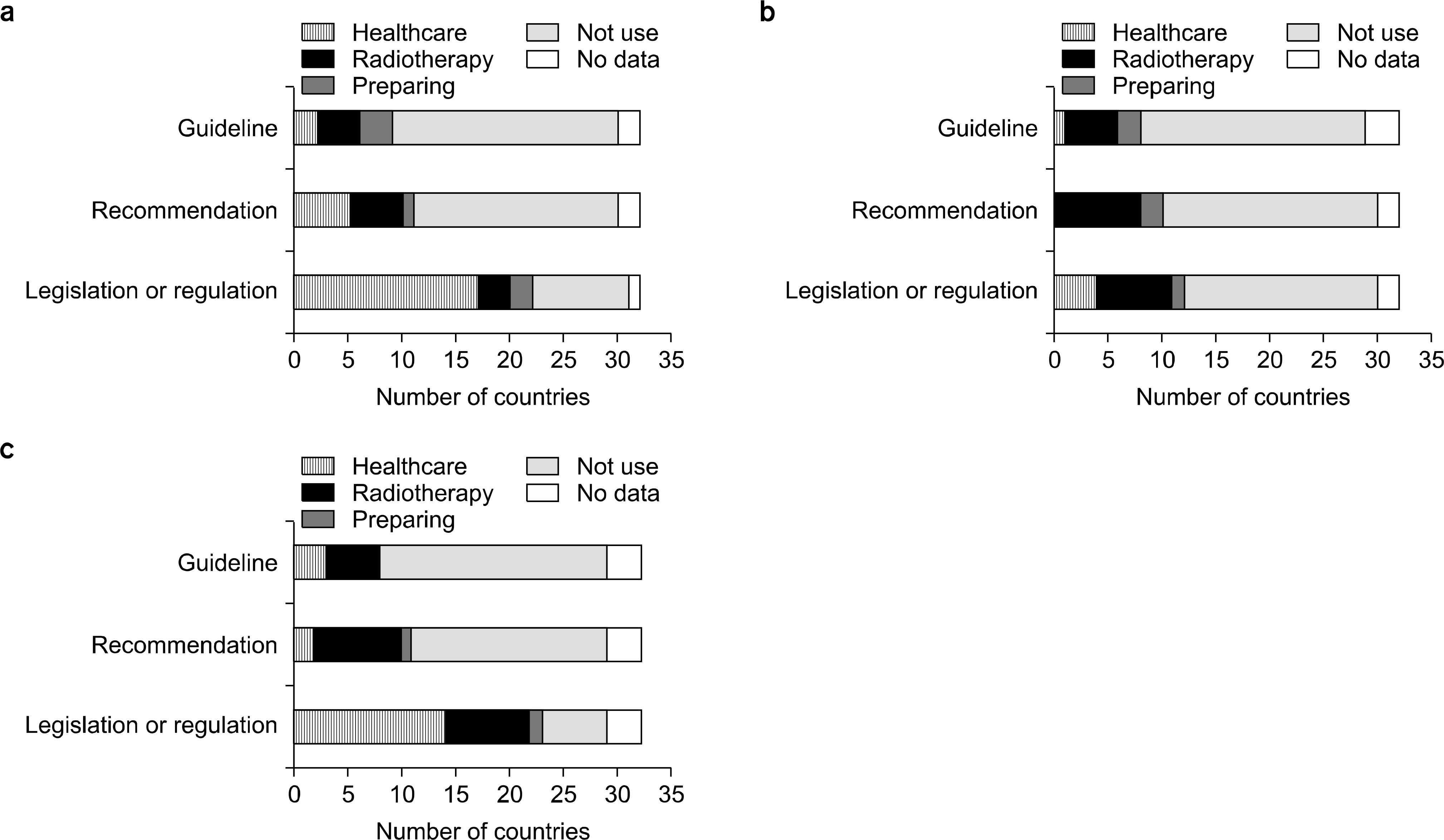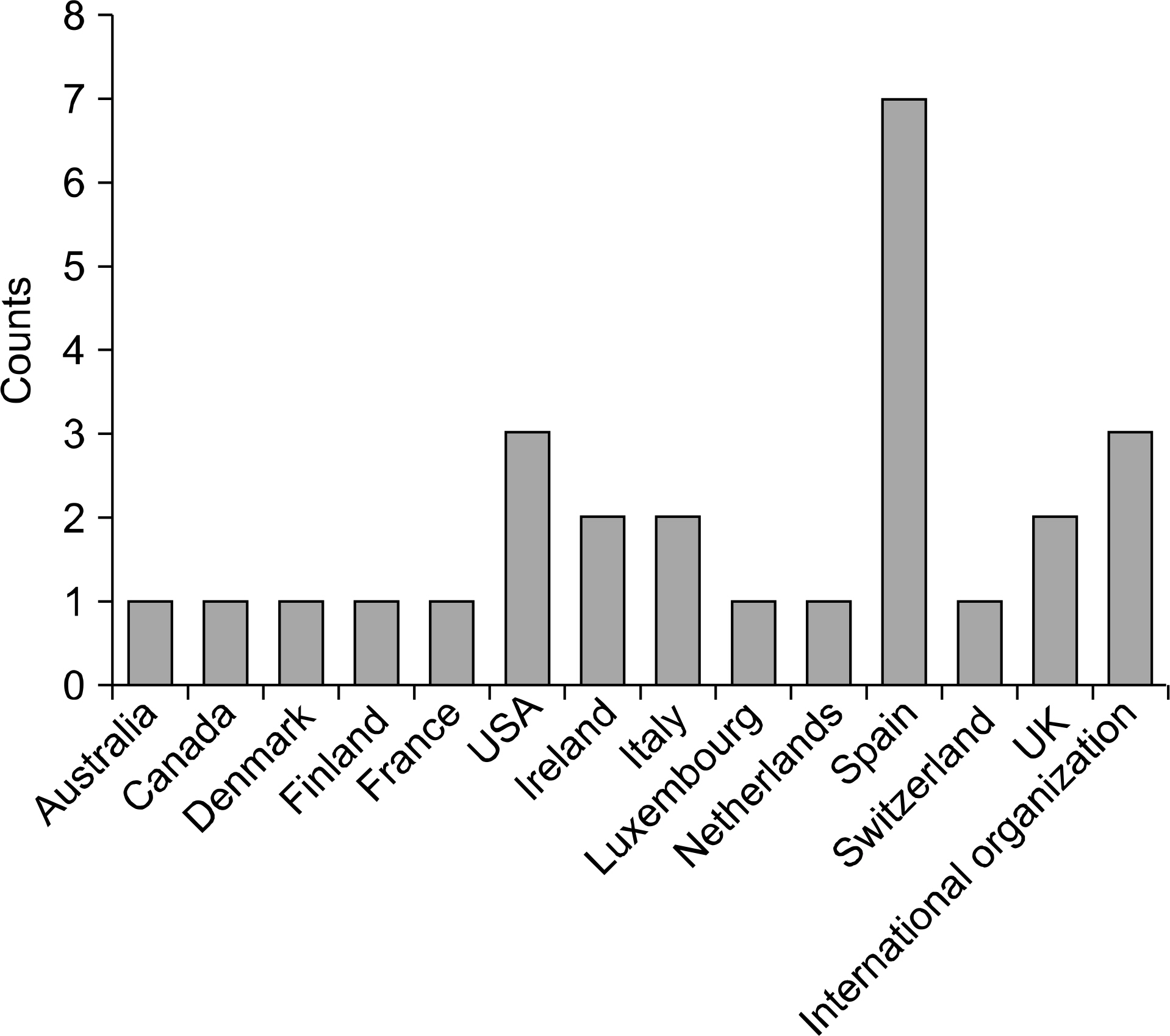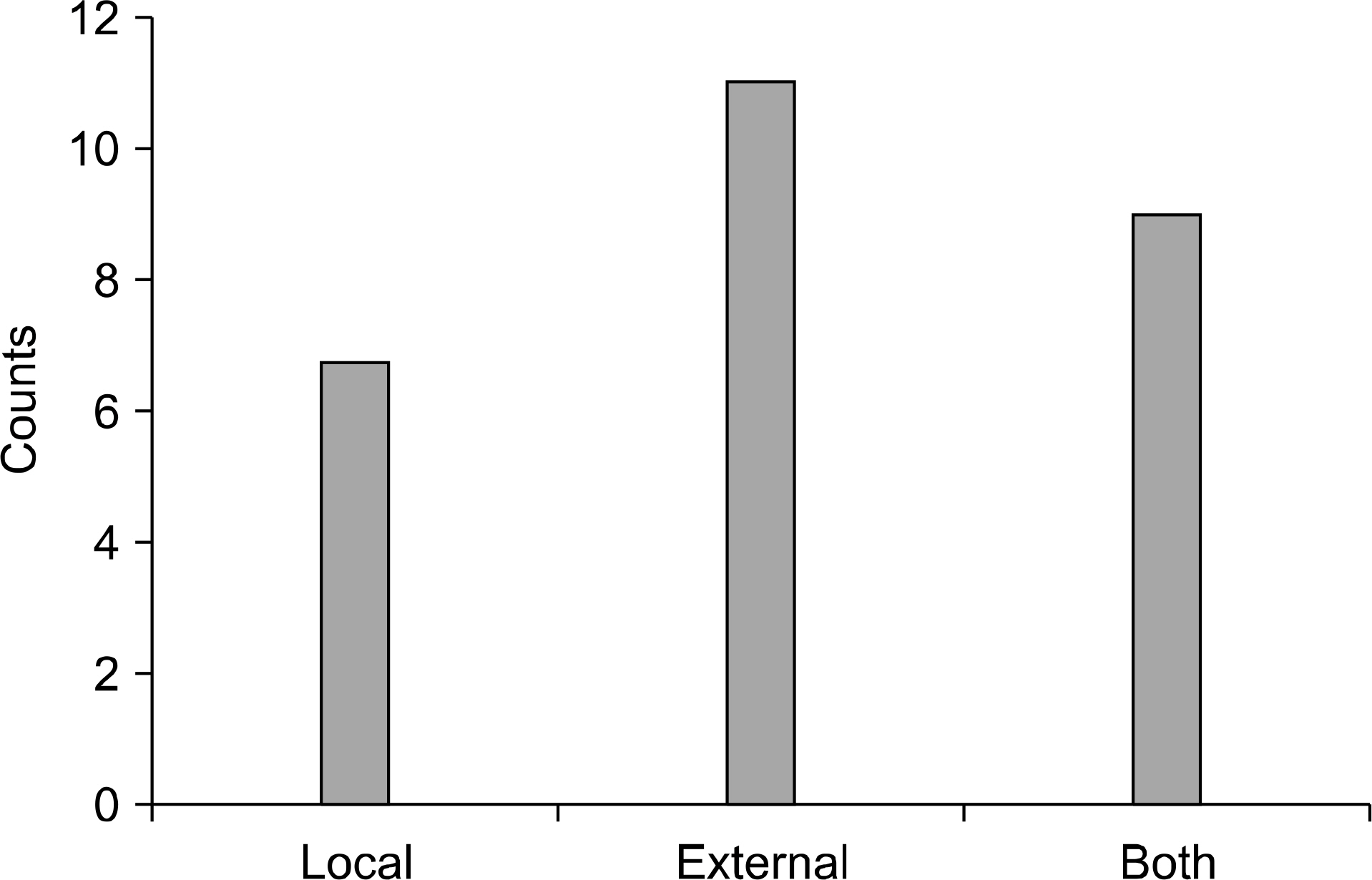Prog Med Phys.
2016 Sep;27(3):131-138. 10.14316/pmp.2016.27.3.131.
Comparative Analysis of Terminology and Classification Related to Risk Management of Radiotherapy
- Affiliations
-
- 1Research Institute of Clinical Medicine, Seoul, Korea.
- 2Department of Radiation Oncology, Kyung Hee University Hospital at Gangdong, Seoul, Korea.
- 3Department of Radiation Oncology, Kyung Hee University Hospital, Seoul, Korea. ohsd32@gmail.com
- 4Department of Bio-convergence Engineering, Korea University, Seoul, Korea.
- 5Department of Radiological and Medico Oncological Sciences, University of Science and Technology, Seoul, Korea.
- 6Division of Medical Radiation Equipment, Korea Institute of Radiological and Medical Sciences, Seoul, Korea.
- 7Department of Radiation Oncology, School of Medicine, Yonsei University, Seoul, Korea.
- 8Department of Radiation Oncology, Inje University Ilsan Paik Hospital, Seoul, Korea.
- KMID: 2376543
- DOI: http://doi.org/10.14316/pmp.2016.27.3.131
Abstract
- We analyzed the terminology and classification related to the risk management of radiation treatment overseas to establish the terminology and classification system for Korea. This study investigated the terminology and classification for radiotherapy risk management through overseas research materials from related organizations and associations, including the IAEA, WHO, British group, EC, and AAPM. Overseas risk management commonly uses the terms "near miss", "incident", and "adverse event", classified according to the degree of severity. However, several organizations have ambiguous terminologies. They use the term "near miss" for events such as a near event, close call, and good catch; the term "incident" for an event; and the term "adverse event" for the likes of an accident and an event. In addition, different organizations use different classifications: a "near miss" is generally classified as "incident" in most cases but not classified as such in BIR et al. Confusion might also be caused by the disunity of the terminology and classification, and by the ambiguity of definitions. Patient safety management of medical institutions in Korea uses the terms "near miss", "adverse event", and "sentinel event", which it classifies into eight levels according to the severity of risk to the patient. Therefore, the terminology and classification for radiotherapy risk management based on the patient safety management of medical institutions in Korea will help in improving the safety and quality of radiotherapy.
Keyword
Figure
Reference
-
1. ISO 31000. Risk management-Principles and guidelines on implementation. International Organization for Standardization; 2009.2. Osborn S, Williams S. In: Seven steps to patient safety-The full reference guide. National Patient Safety Agency; 2004.3. David LC, Dubetz M, Heshmati R, et al. In: A Reference Guide for Learning from Incidents in Radiation Treatment. HTA Initiative #22; 2006.4. Battles JB, Stevens DP. Adverse event reporting systems and safer healthcare. Qual Saf Health Care. 2009; 18:2.5. Ekaette EU, Lee RC, Cooke DL, et al. Risk analysis in radiation treatment -application of a new taxonomic structure. Radiother Oncol. 2006; 80:282–287.6. ISO/IEC 31010:2009: Risk management - Risk assessment techniques. International Organization for Standardization (2009).7. WHO. Radiotherapy Risk Profile. World Health Organization; 2008.
Article8. Radiation Protection N° 181. General guidelines on risk management in external beam radiotherapy. Luxembourg: European Commission; 2013.9. AAPM Task Group 100 report. Application of risk management methods to radiation therapy quality management. American Association of Physicist in Medicine; 2016.10. ICRP Publication 86. Prevention of Accidental Exposures to Patients Undergoing Radiation Therapy. Annals of the ICRP; 2000.11. ICRP Publication 112. Preventing Accidental Exposures from New External Beam Radiation Therapy Technologies. Annals of the ICRP; 2009.12. HTA Initiative #15. Quantitative Approaches to Patient Safety - Research in Risk Analysis and Risk Management as Applied to Radiotherapy. Canada: AHFMR; 2004.13. Radiation Oncology Practice Standards New Zealand. A tripartite initiative RANZCR, AIR and ACPSEM. 2013.14. PHE-CRCE-016. Data Report on Radiotherapy Errors and Near Misses (December 2011 to November 2013). Public Health England; 2014.
Article15. Korea-ROSIS. http://www.rosis.kr/index.asp.16. AHRQ WebM&M. 2013 http://www.webmm.ahrq.gov/.17. AIMS. 2000 http://www.apsf.net.au/.19. Vigie radiothérapie. 2013 https://vigie-radiotherapie.asn.fr/.20. DPSD. 2007 http://www.dpsd.dk/.21. AHFMR HTA ILS. 2007 http://www.ahfmr.ab.ca/.22. JCAHO. 2005 http://www.jointcommission.org/.23. NRC. 2013 http://nrc.gov/.24. ICHT/NRLS. 2003 http://www.nrls.npsa.nhs.uk/.25. PRISMA-RT. 2008 http://www.prisma-rt.nl/.26. ROSIS. 2008 http://www.rosis.info.27. Swiss-ROSIS. 2004 http://www.rosis.ch/.28. SAFRON. 2012 http://rpop.iaea.org/safron/.29. SiNASP. 2013 http://www.sinasp.es/.30. Cantone MC, Ciocca M, Dionisi F, et al. Application of failure mode and effects analysis to treatment planning in scanned proton beam radiotherapy. Radiat Oncol. 2013; 8:127.
Article31. Scorsetti M, Siqnori C, Lattuada P, et al. Applying failure mode effects and criticality analysis in radiotherapy: lessons learned and perspectives of enhancement. Radiother Oncol. 2010; 94(3):367–374.
Article32. Ciocca M, Cantone MC, Veronese I, et al. Application of failure mode and effects analysis to intraoperative radiation therapy using mobile electron linear accelerators. Int J Radiat Oncol Biol Phys. 2012; 82(2):e305–e311.
Article33. Vilaragut JJ, Duménigo C, Delgado JM, et al. Prevention of accidental exposure in radiotherapy: the risk matrix approach. Health Phys. 2013; 104(2):139–150.34. Portaluri M, Fucilli FI, Bambace S, et al. Incidents analysis in radiation therapy: application of the human factors analysis and classification system. Ann Ist Super Sanita. 2009; 45(2):128–133.
- Full Text Links
- Actions
-
Cited
- CITED
-
- Close
- Share
- Similar articles
-
- A Study of Institutional Status of Risk Management for Radiotherapy in Foreign Country
- A Systematic Review of Audiology Terminology
- Use of clinical terminology for semantic interoperability of electronic health records
- Computer for the Learning of Korean Medical Terminology
- The Study on Subject Words of Korean Medical Informatics by Expanded MeSH: Based on Journal of Korean Society of Medical Informatics





